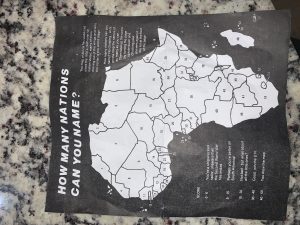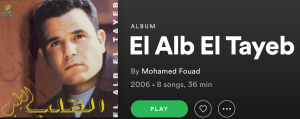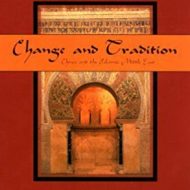When Pat, Taylor, and I were driving to the festival, we were just off campus and we were sitting at a red light when all of a sudden the car moved forward and there was a super loud noise!! The lady in the car behind us, ran into our car! The lady that hit Pat’s car was very nice but they had to exchange information just to make sure because there was some damage on Pat’s car. Going back to one of my earlier blog posts about attention to detail, we had another one of those moments over the weekend! Pat asked me and Taylor to grab his insurance card from the glove box, but there were a bunch of different ones and we kept finding the wrong ones, thinking we were right. Something that I need to continue to work on is attention to detail! But don’t worry everyone involved is fine! Since we had to stop and talk to the lady that hit the car we ended up being a little late to our shift that day, but we called Kwan and let him know!! Once we got to the festival we were able to have a lot of fun and walk around! But with the three of us, it’s always an adventure!!
ICR Reflection Journal: Indianapolis International Festival (2 of 3)
Friday evening was our second day volunteering at the International Festival working with the Indiana Association of Chinese Americans, or IACA. It started off with a bang, literally, when Patrick got rear-ended as we were driving there. One of the women representing a group called “Friends of the Third World” that advocated for community education about lesser known communities, countries, and cultures. She handed us unlabeled maps of Africa (picture below) and asked us to identify as many countries as possible. It was surely funny when you realized you know what countries are in Africa, but struggle to place them in a specific territory as opposed to a general region. It reminded me of middle school when I was quizzed on geography all the time, and made me want to spend more time outside of schoolwork just studying things I enjoy. On a different note, there were a surprising number of people at the festival on dates, and I would personally not recommend it for a few reasons. You had to pay to park ($8), pay for general admission to the festival ($12), domestic beers were running a hard price ($9), and there was olfactory overload at all times with the smells of foods from different cultures trying to out compete the incense. The information available was cool, and it was a unique experience; but when it comes down to it, you could watch a documentary on Netflix and probably get a better picture if you’re here for the education.
We were also able to watch Hanako perform as apart of a Japanese drum routine. It was then that I realized how bad I am at identifying the music of other parts of the world. The song that was playing during their routine had minimal lyrics, but you could have told me it was from literally any asian country and I would have believed you no doubt. Watching all of these performances also makes me not miss having to remember routines for dances and shows I have participated in in the past. Especially an act like Hanako’s where you had to remember like 4 dances in one to different music. This song here is one of the bops that played during the Mediterranean belly dancing that got us going in the car on the ride home. Enjoy.


ICR Reflection Journal: Indianapolis International Festival (1 of 3)
To complete the ICR portion of this course, I have been assigned to the Indiana Association of Chinese Americans, or the IACA. The IACA was one of hundreds of booths at the International Festival that took place this past weekend at the State Fairgrounds. The first day that I volunteered at the festival was Thursday evening when the foot traffic was quite minimal. We were able to meet some of the members who were more involved including Master Ling who runs martial arts studios of various types of practice in multiple locations throughout the Indy area (“we” being Maddie and Patrick in addition to myself). Some of the different martial arts groups performed on stage, and we were able to watch their presentations. We not only learned about the historical evolution of the different art forms, but we also were able to talk to some of the people who had participated in the showings with various levels of training and experience. It was cool to hear their perspective and see why they chose their respective martial art, what it had taught them, and how they connect to a culture that for some was different than their own. In addition, Master Ling told us about all of his students and the typical skill requirements needed to graduate to the next level. It was cool to learn more about something I was not so familiar with, and everyone made the cultural connections very accessible so you could see why things were done a certain way. It was a nice and easy way to start the festival and interact with other people in the community I probably would not have otherwise.
ICR – Nur Allah
This past Sunday I was working at my ICR, which is the Nur Allah Islamic Center. They have a weekend school there, which is what I usually help out with. It is very similar to sunday school in the Christian church. At the school they teach about Islam and all the prayers, as well as teaching the students Arabic, and how to read and write in that language. They have a wide variety of ages, from kindergarten/pre-school age all the way to a senior in high school. This week I was working with the smaller children to help them learn how to write in English, as well as how to recognize different Arabic numbers and letters. These kids are very smart, and going to work with them is honestly one of my favorite parts of the week. This week I was working with the smaller children and was very pleased by the growth they have shown! At the beginning of our time there they were struggling with some English words, and on Sunday they were able to write full words and recognize some Arabic letters! Overall I really enjoy going to Nur Allah, and I will be sad when the semester ends and I won’t be able to see these kids anymore!
The Documentary (Readings for 11/5)
I am not a fan of documentaries, but I didn’t mind watching this one. As I think I have already mentioned before, I really don’t know anything about the religion of Islam. Learning about the Hajj was very interesting. As someone else said in class today, I had no idea that the pilgrimage was as organized or arduous. I have always had the idea that they visited the sacred city and the Kaaba to give praise and acknowledge its historical and spiritual beauty and then called it a day. Their pilgrimage is truly a journey within themselves’, and it seems as though it would be refreshing. I say this because in the documentary, the man kept talking about going back to the basics. A break from the usual obligations and cell phones and societal structures would be nice for a change, and definitely helpful in order to get into the right state of mind for such a holy adventure. The part I really liked regarding this idea, was that everybody, regardless of status, money, etc., wore the same simple clothing in the same way. I also loved when he explained how walking down the street in Mecca, was like walking around the world because of the diversity in people who practice the religion. The video made me feel like the Hajj is something that all cultures and all people, religious or not, can learn from. During the Hajj, fighting isn’t allowed, and everyone is treated equally regardless of race or ethnicity. How is it that two million people can gather in a crowded place, and seemingly drop all negative human characteristics in order to complete this mission for their religion? Why can’t everyone do that all the time?
Reading and Discussion 11/7
In the documentary of the Hajj, something the class and I noticed was it followed a white man. He was not born into the religion and does not represent most of the religion. Did they choose a white man so it would be received better by the western world? The clothing/ robes they wore were all similar, so it helped connect all the Muslims into one unit. Muslims from Africa and Indonesia do the Hajj. They were all equals going on this journey to connect with Allah. It is crowded and dedicated to their journey, while if we are waiting in a long line here, we are not necessarily always patient.
The 5 pillars of Islam are the Hajj, fasting from sunrise to sunset, facing Mecca while you pray, charity, belief and worship in Allah. What is Hadith? They are traditions attributed to Mahammad that are not necessarily in the Qur’an.
The Hajj
Learning about the Hajj was very interesting. Prior to watching the documentary, I knew a little bit about the pilgrimage to the Ka Ba but I didn’t know much about what actually happened. The Hajj really teaches the importance of faith and life while stripping away all of the human values of wealth, pride, and social status. During the pilgrimage, Muslims have the time and mind to reflect on what is really important in life. I did not know that many people die on this pilgrimage. It was very hard watching people escape the fire. I can’t imagine what it must have been like to witness that in person. I think that the Hajj fulfills the faith of Muslims just like any pilgrimage or retreat fulfills the faith of Christians or any other believers. The description of the city of Mecca as “the entire world around one block” was very eye-opening and emphasized that Islam is a worldly religion and cannot be stereotyped as only in the Middle East.
Severity of Attacks in Yemen during 2019
Reports from the International Humanitarian group have carried information throughout the year 2019. This mainly pertains to civilian lives lost in compared to armed conflict. The article shows that as of November 2019, 335 Yemeni children have lost their lives. An Additional 600 children have been injured due to attacks on civilians. The International Humanitarian Group reports that these deaths are the result of airstrikes, landmines, and shelling in civilian areas. Another example of these attacks was on August 9th when a bus was targeted by a Saudi airstrike. It is estimated that 50 people died during this attack, 41 of whom were children. Many experts do not see an end to the violence until the war ceases completely between Saudi Arabia and Yemen since the death toll has only been rising since 2014.
Yemen: 335 Yemeni children killed, 600 injured in past year in attacks
Saudi Attack on Yemen
The other day, Yemen was the victim of an airstrike targeted at civilians. The Houthi group, a Yemen rebel group, was accused of coordinating a drone strike in Saudi Arabia in an attempt to end a war. However, now that the war is considered over, all airstrikes and physical conflicts should have ceased. Unfortunately, Saudi forces have refused to make comment on the airstrike that killed 16 civilians. Amongst these, deaths were 7 children and 4 women. This attack was on the Abbas Alhallemi house located in Qatabah, Dali province. Since the beginning of the conflict in 2016, it is estimated that close to 70,000 people have lost their lives.
Yemen: 16 civilians, incl 7 children killed in Saudi-led attacks
The Hajj Reflection
Like most items in Islamic culture, I was extremely unfamiliar with the Hajj and ideas that surround it. It was a pretty confusing concept at first, most likely because there is nothing like it in Christianity. I learned that the Hajj is sacred and specific to Muslims which implies that not just anyone can make the pilgrimage and visit Mecca whenever they feel like it. It is a very scheduled tradition that happens annually. I found it interesting that it is required (for those who have the means to make the pilgrimage) for all Muslims at least once in their lifetime, again probably because a religious requirement this large is so foreign to my beliefs.
I was really fascinated with the whole concept of thousands upon thousand of people of the same religion coming together to worship at such a sacred place. I cannot imagine how powerful of an experience that must be and how fulfilling of a feeling that the Hajj must create for Muslims.
The documentary was extremely easy to watch and I am very interested about the Hajj and the tradition now. I would love to learn more about it and continue to grow my knowledge on the Muslim religion in the future.
